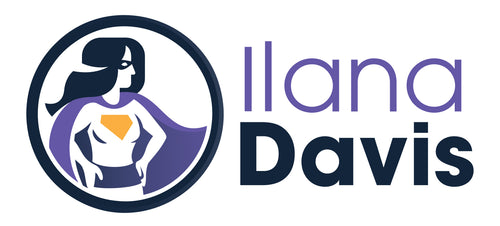Product description tabs could kill conversions
Published: August 13, 2020 - Updated: September 02, 2025
Do a quick Google search for “product description tabs”. You’ll likely find all the ways product tabs can help you and how to add them to your site.
The claim of benefits include:
- Add more content to your website
- Reduce clutter
- No scrolling to find more information
- Looks sophisticated
- Improves user experience
What I didn’t see though, is all the reasons not to use tabs.
The reality of product description tabs
Hides important content at a glance
To reduce clutter, a store owner sets up product tabs. The description is usually first because that’s what they believe is most important to the customer. Then all the other stuff (product specs, sizing, ingredients, or shipping details) go in the other tabs.
This other content is boring. It’s usually stuff they are required to share and not the creative or fun content. I equate this to those warnings we see on electronics that say keep away from water. We all know putting electronics near water could end badly but the disclaimer needs to be there.
This issue though, is that you are deciding what’s important to the shopper. As a vegan, I am always looking at ingredients and I don’t want to search long and hard for this. Hiding the information in tabs forces the shopper to click on different tabs to find what they need.
Your job is to provide the information and let the customer decide what’s important to them.
Sometimes, depending on how the tabs are coded, you may also be hiding this content from Google. If Google can’t see the content, it won’t show up in search results, tanking your SEO.
Tabs aren’t always WCAG accessible
Google is like a visually impaired person. They can’t “see” what’s on your page and depend on software to tell them what is there.
As I mentioned above, sometimes the way product tabs are coded, it hides important content from Google. This is like screen readers. Screen readers, and those who use the keyboard to navigate the page, need specific pieces of code so that it works properly. If it’s not coded properly, you are effectively saying everything here doesn’t really matter.
When you ignore accessibility, you are ignoring revenue. It is your responsibility as the store owner to ensure your website is accessible. If I hear one more person tell me that a visually impaired person doesn’t buy my products, I may actually lose it.
A visually impaired person may want to buy your products but can’t. There is a big difference between wanting your product and the inability to buy.
Likely overkill for the amount of content
Is it me or are tabs in the description the invention of a marketer who tried to fit as much on the page as possible?
As mentioned above, a benefit to product tabs is to hide lengthy content. Then why do I often find Shopify stores using tabs with a single sentence in each tab? What’s the point?
What’s the point of using a tab where product reviews go, make me click on the Reviews tab, only to find no reviews?
Consider how much content you actually have. Add the content to your product page. Do people have to scroll? How far down would they have to scroll? If it’s only a few lines, you’re probably over-engineering your product page to save a few flicks of the mouse scroll.
Negatively impacts user experience
Instead of me listing more reasons tabs negatively impact the user’s experience, I want you to read back through the items above.
Hiding information, lack of accessibility, and over-engineering, all directly correlate to poor user experience.
Focus on the experience of your customers instead of a trend that probably shouldn’t have existed in the first place.
The supposed benefits of product description tabs
If I haven’t already convinced you that tabs on the product page aren’t necessary, let’s address the claimed benefits.
Add more content to your website – There is no rule that says you can’t add more content to the product page. You’re not paying per character or per word. Content is what drives people to your website and directly correlates to conversions. So put as much quality content as you can on your site.
Reduce clutter – Clutter on the page happens when the context is lost. Clutter is when there are so many things happening on the page that you don’t know what to focus on. Move the tab names to subheadings to create structure and organization.
No scrolling to find more information – What is it about scrolling? Why do people think no one will scroll down. They will! Have you looked at Amazon’s product pages recently? They are incredibly long and they have no tabs.
Looks sophisticated – All the big brands are doing it! No, they aren’t. Some are yes, and perhaps it works for them. But you’re not them. Be your own company and use what works for you, not what works for them. You can still have a clean and sophisticated product page without tabs.
Improves user experience – I’ve busted this already but I’ll give you a real-world example. Animals Matter was struggling with their customer service calls. Scott, Animals Matter CEO, told me they constantly received phone calls about the sizing of their companion beds. The sizing was behind a tab labeled “size” yet people didn’t see it. One week after removing their product description tabs, I received this email from their Scott:
Thank you…..We didn’t receive any calls over the weekend for Sizing! That’s a First
Scott, Animals Matter CEO
Alternatives to tabs
Instead of using tabs, there are simple solutions.
- Use proper HTML headings (eg: h2, h3, h4…) which not only create the structure to your product page but are easy to find visibly when skimming through the page.
- If you must use tabs, use fake tabs. These have the same visibility of what a tab looks like. The difference is that when you click on the “tab” a shopper is brought farther down the page using anchor links. The content is visible on the page and your headings are toward the top where they can be seen.
- Baymard, the leading e-commerce user experience reach company, recommends two other options. Vertical collapsible sections such as an accordion or one long page with a sticky table-of-contents. Both of which performed well in their tests. (Later research from Baymard proved otherwise.)
I recognize that this whole article is an unpopular opinion. Before you add product tabs to your Shopify site I hope you review your options. If you already have product tabs, consider removing them on your top-selling products. Test it out, measure, and see which way works best for your customers.
JSON-LD for SEO
Get more organic search traffic from Google without having to fight for better rankings by utilizing search enhancements called Rich Results.




